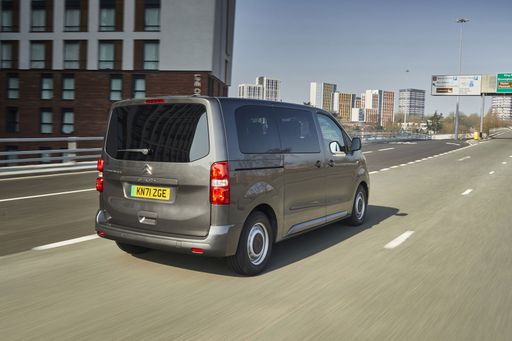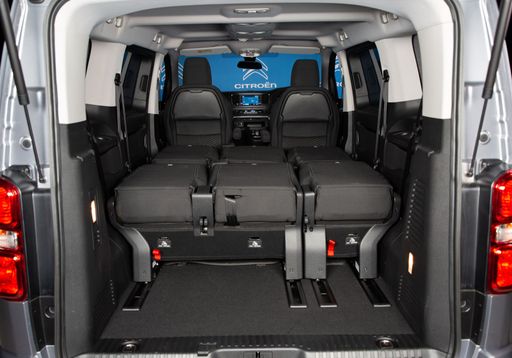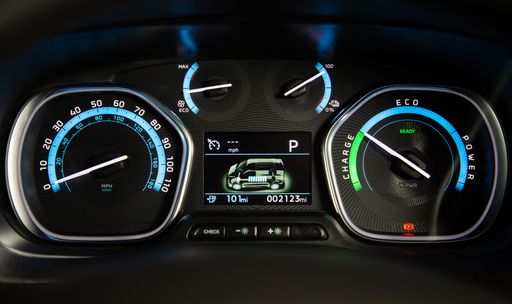Citroen Spacetourer vs Renault Trafic Bus – Which one offers the better deal?
Two cars, one duel: Citroen Spacetourer meets Renault Trafic Bus.
Which one wins in performance, efficiency and value for money? Find out now!
Costs and Efficiency:
Price and efficiency are key factors when choosing a car – and this is often where the real differences emerge.
Citroen Spacetourer has a barely noticeable advantage in terms of price – it starts at 34800 £, while the Renault Trafic Bus costs 38200 £. That’s a price difference of around 3414 £.
Fuel consumption also shows a difference: Renault Trafic Bus manages with 6.70 L and is therefore barely noticeable more efficient than the Citroen Spacetourer with 6.80 L. The difference is about 0.10 L per 100 km.
Engine and Performance:
Power, torque and acceleration say a lot about how a car feels on the road. This is where you see which model delivers more driving dynamics.
When it comes to engine power, the Citroen Spacetourer has a minimal edge – offering 180 HP compared to 170 HP. That’s roughly 10 HP more horsepower.
In acceleration from 0 to 100 km/h, the Renault Trafic Bus is slight quicker – completing the sprint in 10.60 s, while the Citroen Spacetourer takes 11 s. That’s about 0.40 s faster.
In terms of top speed, the Citroen Spacetourer performs minimal better – reaching 185 km/h, while the Renault Trafic Bus tops out at 180 km/h. The difference is around 5 km/h.
There’s also a difference in torque: Citroen Spacetourer pulls slight stronger with 400 Nm compared to 380 Nm. That’s about 20 Nm difference.
Space and Everyday Use:
Cabin size, boot volume and payload all play a role in everyday practicality. Here, comfort and flexibility make the difference.
Both vehicles offer seating for 9 people.
In curb weight, Citroen Spacetourer is minimal lighter – 1953 kg compared to 2031 kg. The difference is around 78 kg.
In maximum load capacity, the Renault Trafic Bus performs somewhat better – up to 4000 L, which is about 700 L more than the Citroen Spacetourer.
When it comes to payload, Renault Trafic Bus slight takes the win – 982 kg compared to 914 kg. That’s a difference of about 68 kg.
Who wins the race?
The Renault Trafic Bus proves to be has a very small edge and therefore becomes our DriveDuel Champion!
Renault Trafic Bus is the better all-rounder in this comparison.

Renault Trafic Bus
Citroen Spacetourer
The Spacetourer redefines versatility with its spacious interior and comfortable seating for families and groups. Its stylish exterior and thoughtful design features make it not just a practical choice, but an attractive one for modern drivers. Whether for daily commutes or adventurous road trips, the Spacetourer seamlessly blends functionality and flair.
details @ Citroën / Stellantis Media
@ Citroën / Stellantis Media
 @ Citroën / Stellantis Media
@ Citroën / Stellantis Media
 @ Citroën / Stellantis Media
@ Citroën / Stellantis Media
 @ Citroën / Stellantis Media
@ Citroën / Stellantis Media
Renault Trafic Bus
The Renault Trafic Bus is a versatile and spacious option for those needing to transport multiple passengers comfortably. With its modern design and practical features, it is well-suited for both business and leisure purposes. Its efficient engine and smooth handling make it a reliable choice for long journeys.
details
 @ Citroën / Stellantis Media
@ Citroën / Stellantis Media
|
|
|
|
|
Costs and Consumption |
|
|---|---|
|
Price
34800 - 52100 £
|
Price
38200 - 54400 £
|
|
Consumption L/100km
6.80 L
|
Consumption L/100km
6.7 - 7.2 L
|
|
Consumption kWh/100km
23.7 - 24.4 kWh
|
Consumption kWh/100km
-
|
|
Electric Range
217 - 351 km
|
Electric Range
-
|
|
Battery Capacity
-
|
Battery Capacity
-
|
|
co2
0 - 180 g/km
|
co2
175 - 189 g/km
|
|
Fuel tank capacity
70 L
|
Fuel tank capacity
80 L
|
Dimensions and Body |
|
|---|---|
|
Body Type
Bus
|
Body Type
Bus
|
|
Seats
8 - 9
|
Seats
8 - 9
|
|
Doors
5
|
Doors
4
|
|
Curb weight
1953 - 2240 kg
|
Curb weight
2031 - 2352 kg
|
|
Trunk capacity
1624 - 2011 L
|
Trunk capacity
-
|
|
Length
4983 - 5333 mm
|
Length
5080 - 5480 mm
|
|
Width
1920 mm
|
Width
1956 mm
|
|
Height
1890 mm
|
Height
1973 - 1974 mm
|
|
Max trunk capacity
2700 - 3300 L
|
Max trunk capacity
3200 - 4000 L
|
|
Payload
850 - 914 kg
|
Payload
718 - 982 kg
|
Engine and Performance |
|
|---|---|
|
Engine Type
Electric, Diesel
|
Engine Type
Diesel
|
|
Transmission
Automatic
|
Transmission
Manuel, Automatic
|
|
Transmission Detail
Reduction Gearbox, Automatic Gearbox
|
Transmission Detail
Manual Gearbox, Automatic Gearbox
|
|
Drive Type
Front-Wheel Drive
|
Drive Type
Front-Wheel Drive
|
|
Power HP
136 - 180 HP
|
Power HP
110 - 170 HP
|
|
Acceleration 0-100km/h
11 - 12.1 s
|
Acceleration 0-100km/h
10.6 - 16.5 s
|
|
Max Speed
130 - 185 km/h
|
Max Speed
161 - 180 km/h
|
|
Torque
260 - 400 Nm
|
Torque
300 - 380 Nm
|
|
Number of Cylinders
4
|
Number of Cylinders
4
|
|
Power kW
100 - 132 kW
|
Power kW
81 - 125 kW
|
|
Engine capacity
2184 cm3
|
Engine capacity
1997 cm3
|
General |
|
|---|---|
|
Model Year
2024 - 2025
|
Model Year
2023 - 2025
|
|
CO2 Efficiency Class
A, G
|
CO2 Efficiency Class
G, F
|
|
Brand
Citroen
|
Brand
Renault
|
Is the Citroen Spacetourer offered with different drivetrains?
The Citroen Spacetourer is available as Front-Wheel Drive.
The prices and data displayed are estimates based on German list prices and may vary by country. This information is not legally binding.
